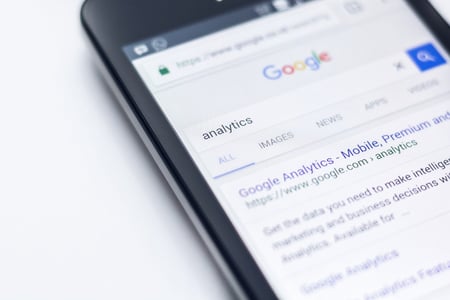Index Content
A meta description is an HTML tag used to describe the content of a web page. It appears below the title and the URL of your page as it appears in the search engine results. However, you must keep in mind that to remain visible in Google, your meta description must contain between 140-160 characters.
Meta descriptions are essential, so having the keyword in the body of the meta description is highly recommended by search engines and can help you to improve your positioning. Also, remember that their main function is to allow you to personalise the specific section of text that describes the page where you are writing it.
how to create meta descriptions?
The most important thing to start creating a good meta description is to offer in one or two sentences a compelling reason to visit the web page. Add a clear call to action, address an emotional pain point or offer a specific benefit to visitors. You can also use online tools to check your meta descriptions.
Then when it's time to get down to writing it, you need to answer three key questions:
- why is a user looking for this content?
- what are the users' questions that we answer on our website?
- what content is there on the page that could be useful, interesting or useful to users?
Similarly, the content must be real and in line with what is offered on the page. Otherwise, we will be making misleading advertising and, probably, we will have a negative opinion of the users, something that will affect the SEO positioning of the website.

Mistakes to avoid
There are a series of mistakes you should avoid when writing the meta-description of your website. To do so, follow this series of five useful tips that can be very useful for you:
- Do not duplicate meta descriptions on different pages.
- Do not exceed too much in the length of the meta description.
- Use keywords, but don't overdo it.
- Beware of unoriginal and unreadable meta descriptions.
- Do not use too many capital letters.

How to optimise the meta description according to the website
When optimising the meta description, take into account the type of page and its content. Broadly speaking, we can differentiate between different types of website:
- E-commerce:it can be a listing page (category or family of products) or a product page. In this case, we recommend you include the target keyword of the page and highlight the competitive advantages of your business, along with a call to action that encourages clicks.
- Corporate website: the meta-description will contain a brief summary of the page and, as far as possible, the target keyword for positioning will be included.
- Blog: the information presented will be purely informative: a very brief summary of the page and what the user will discover or learn from it. We will avoid giving away the essential content, otherwise the user will lose interest in visiting us.
8 keys to make a meta description work
- answer the questions. It is likely that people on Google are looking for the answer to a series of questions. Try to anticipate and think about what they are looking for or how your content can help them. Some of the ones you can use have already been mentioned above.
- be curious - give the reader enough information to whet their appetite and make them want to visit your page to find out more.
- keep the description concise. The text on your page is the place where you inform or educate your audience, so the meta description doesn't have to be long. Give a quick summary of the page or mention the point that will grab your readers' attention.
- don't mislead the reader - if your meta description misleads the reader by offering different or irrelevant content than what is actually presented on the page you are trying to direct them to, you will be offering a poor user experience. This not only affects the perception of your brand, it also signals to Google that your content is not quality content.
- don't overuse keywords: While your meta description should be keyword-rich, it should also read naturally. If you overuse keywords to get a higher ranking, your readers may not understand your meta description.
- be interesting and unique to your readers. If possible, make your meta descriptions fun and interesting to read. Also, use descriptive words (not unnecessary or "filler" words) and do your best to connect with your target audience.
- be specific. The first key to a great meta description is to pose a question or problem and offer a way to solve it. The question should be clear and unambiguous.
- prioritise relevance - alwayskeepyour audience in mind. By understanding their needs, their behaviour and their problems, you will know how to help them solve them.
The meta-description is definitely not a key factor for SEO positioning, but it helps enormously. In fact, most users click on a page after reading its description.





